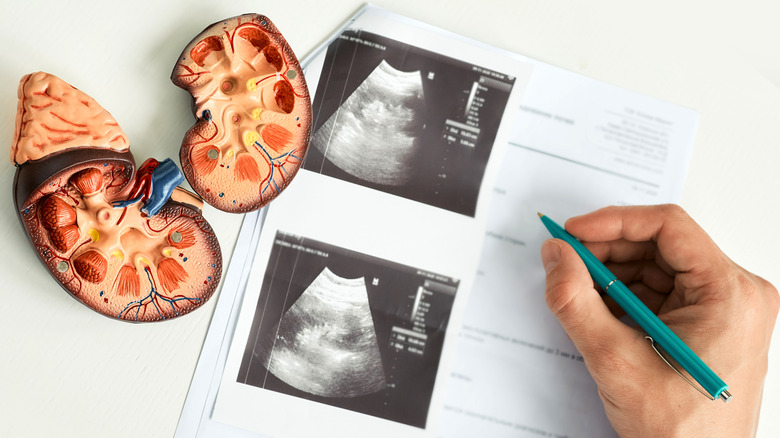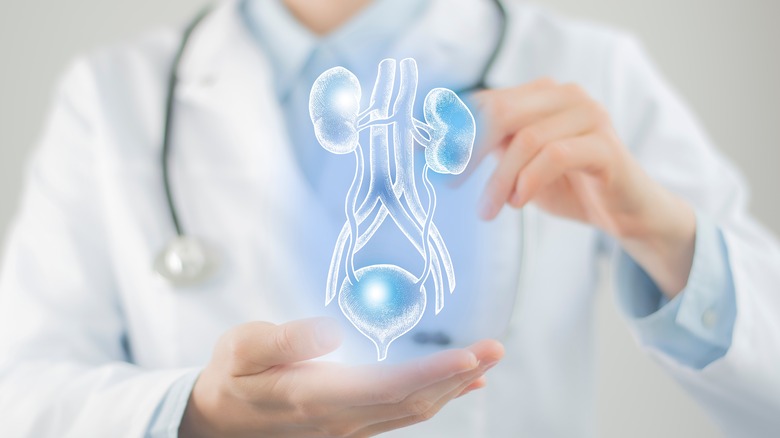What Does It Mean When You Have A Horseshoe Kidney?
According to WebMD, the horseshoe kidney (aka renal fusion) is a renal development condition that occurs in a child before birth. Normally, the baby's kidneys position themselves just above the waist inside the womb. However, at times, both kidneys join together at the base in the form of a U, hence, the name horseshoe kidney.
A 2018 study published in Urology Annals reported that although horseshoe kidney is one of the most common renal abnormalities, it only affects 0.25% of the population. Similarly, Medscape reveals that horseshoe kidney occurs in every 1 in 400 to 800 births.
Cleveland Clinic states that the reasons behind this disease are so far unknown. But, the condition occurs because of genetic problems in the chromosomes responsible for developing kidneys. Cleveland Clinic experts report that environmental factors, such as a pregnant mother's exposure to drugs or toxic chemicals before birth, may also result in horseshoe kidneys.
According to Cleveland Clinic, people with renal fusion may be at high risk of symptoms of kidney problems such as polycystic kidney disease, kidney tumors, or vesicoureteral reflux.
Symptoms and treatments for horseshoe kidney
According to WebMD, around one-third of the time, this condition doesn't show any symptoms, but the children might display certain health problems caused by kidney problems. For instance, urinary tract infections (UTIs) are highly prevalent in kids. Signs of UTIs include smelly pee, pain, fever, and frequent urge to urine. Moreover, WebMD states that kids with horseshoe kidneys might display signs of kidney stones, such as stabbing pain in the lower back or sides of the belly, fever, chills, or nausea. They may also have cloudy-looking urine. Cleveland Clinic states that people with kidney stones may also notice blood in their urine.
According to Boston Children's Hospital, several tests are conducted to diagnose the disease. Doctors may recommend a renal ultrasound to check the kidneys' structure by obtaining an image. In addition, a special X-ray called voiding cystourethrogram (VCUG) is performed to examine the patient's urinary tract and determine if there is any reverse urine flow into the body. Besides, blood and urine tests are also suggested to check kidney function.
As per Urology Health, although there's no cure for renal fusion, it's possible to treat the symptoms such as backward urine flow through surgery.


